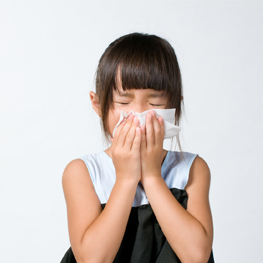
It is sometimes quite difficult to know if a mildly ill child should be kept home from school or when a recovering child should be sent back. The decision is made more difficult when alternate childcare arrangements have to be made, or when a parent must stay home from work to care for the child. This article will outline some common scenarios and will offer some guidelines to follow in making that decision.
Remember that these are just guidelines and that numerous other factors may need to be considered as well. Whenever a child has a fever, they should not go to school. This is because fevers virtually always indicate that an infection is present. Even though the most common infections are relatively benign viral respiratory infections, such as colds and influenza, your child should rest, be kept well-hydrated and be kept away from other children and adults to prevent the spread of the illness. If the fever disappears, but the child still has a cough, you should still keep them home until the cough is infrequent and not ‘wet’ or ‘chesty’ sounding.
A child with a continuous nasal discharge is also considered infectious and should be at home. Children who have been put on antibiotics for ear, respiratory or urinary tract infections can generally be sent back to school whenever their fever is gone and they are no longer in discomfort.
Children who have been vomiting should be kept home, until they have been able to keep food and liquids down for at least 12 to 16 hours and are back to their usual energy level. When they have had diarrhea, they may return to school when the bowel movements are back to or nearly back to their usual consistency and frequency and are not so urgent as to cause accidents.
Chickenpox is a highly infectious illness; however, it is most infectious before the appearance of the skin lesions (pox). In many locales, school and daycare policies require children with chickenpox to stay home until the rash has crusted over or cleared.
Sprained ankles and knees are more common in older children. In general, if there is a significant amount of swelling present, the child should spend at least one day resting with the leg elevated, applying ice packs frequently. When the swelling has subsided and the child can walk, with very little limping, they may return to school.
Sometimes your child will awaken just not feeling well. They may not have a fever or any other obvious sign of illness, but may be somewhat lethargic and have a poor appetite. Whether or not you keep this child at home will depend on how unusual this behavior is for that child and whether you have any reason to suspect that it may be school-avoidance behavior. Giving the child the benefit of the doubt is probably worth it.
In conclusion, there are indeed some circumstances when it is clear that your child should stay at home because of illness. When in doubt, it is probably better to err on the side of caution, both for your child’s comfort and for the health of his/her classmates and teachers.
Cathryn is a family physician and mother of four.
Calgary’s Child Magazine © 2024 Calgary’s Child